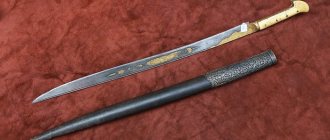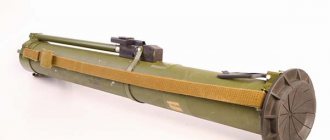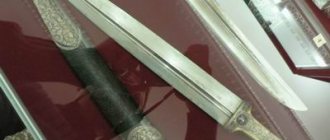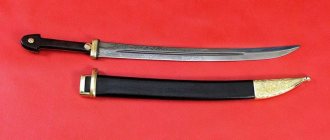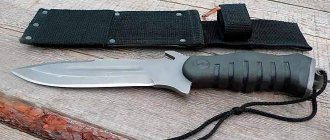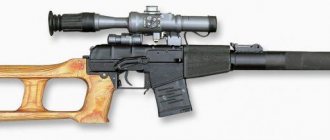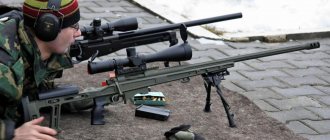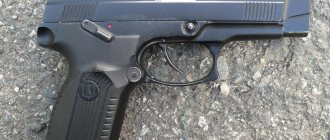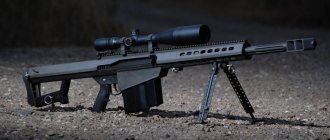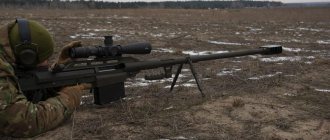07:00, 24.06.2017 14
Turkic “trinity” and fighting with the blunt side of the sword
Photo: wikimedia.org (Janissaries of Murad IV)
Kazan researcher Bulat Nogmanov, whose publications, as it turned out, is read by Mintimer Shaimiev, continues to acquaint Realnoe Vremya readers with his observations about how the culture of the ancient Ottoman Empire penetrated into the life of modern Turkey. In today's column, he talks about such an important phenomenon of Ottoman material culture as edged weapons, namely, the variety that is longer than a dagger.
Prerequisites for creation
The era of the Crusades, which provoked a whole series of armed conflicts between warriors of the East and West, led to the fact that edged weapons began to develop and evolve at an accelerated pace. As trophies, weapons fell into the hands of enemy soldiers, were studied, and periodically elements that seemed especially useful were used to create their own weapons. Accordingly, the technique of using these weapons was also adopted. This is how the saber appeared in Europe. In the Ottoman Empire - a scimitar.
At that time, in European armies the emphasis was placed on protecting the warrior in battle. For this purpose, heavy armor was used that completely covered the warrior’s body. To break through them, a heavy knight's sword was required. In the armies of the east, heavy steel armor was not used. Therefore, the main weapon was a curved saber, lighter and more convenient in battle. However, it did not have piercing properties, and was practically powerless against armor in a steel shell. It was the Turks who were the first to decide to take note of the enemy’s weapons, and created a new bladed weapon that had the qualities of both a sword and a saber - the scimitar.
Who will come to them with a sword...
One of the most unique and at the same time deadly inventions of antiquity is the sword. The sword was idolized, legends were made about it, people were proud of it, they took oaths on it, and its possession was elevated to the rank of art. And it was an integral part of human everyday life. Folk wisdom attributed to the Japanese says: “Even if you need a sword only once in your life, you should always wear it.”
In the Ottoman Empire, the sword was treated with due reverence and great respect. There are known cases when sultans swore unbreakable oaths on their swords, which could only be broken by God's providence. This custom, of course, goes back to the Turkic nomadic tradition, the main value of which was the trinity of horse, woman and sword. In the Sublime Porte, weapons were divided into four main types: impact, piercing, cutting and small arms. Blades, which were classified as cutting weapons, were further divided into several types:
In the Ottoman Empire, the sword was treated with due reverence and great respect. Photo tameshigiri.ca (from the Topkapi Palace Museum in Istanbul)
- The famous “scimitar”, which was common in the 16th-19th centuries, is popularly known as the “sword with ears” (due to the shape of the handle, which resembles ears). Good skill is required to wield this sword; it turns into a deadly weapon only in skillful hands;
- The "Gaddare" was a short, outward curved and very sharp sword that was swung in a circular motion over the head during an attack. Thanks to the special technique of use and sharpness, the blade caused great damage to the enemy. Gaddare was usually worn on the shoulder or behind the back;
- The Shamshir is an outward curved sword that becomes thinner and sharper from the base to the tip. From the side it resembles the curved tail of a lion. Shamshir was worn on the belt and used for defense;
- "Karabela" - was used mainly by the Janissary corps and cavalrymen. A distinctive feature is the handle, made in the shape of an eagle’s head;
- “Hancher” is a short dagger with a floral pattern on a blade 35-40 cm long. Used for close combat;
- “Mamluk sword” is a thin, long and light blade with a slight outward bend;
- "Pala" is a short straight sword with a flared and outwardly curved end. Used by both sailors and cavalrymen for close combat.
As can be seen from the description, most Ottoman swords have a curved blade. “Echoes” of these swords can be found in the weapons of European, Russian and even American troops right up to the period of mass distribution of firearms.
As can be seen from the description, most Ottoman swords have a curved blade. Photo: tuerkenbeute.de
Distinctive features
The scimitar combines the qualities of both a sword and a saber and allows you to deliver slashing, slashing and piercing blows. It is distinguished from a saber by the shorter, biconvex shape of the blade. At the same time, the handle of the weapon and its tip are on the same line. This shape of the blade makes it possible to inflict puncture wounds in battle, which is unusual for a saber. There are noticeable differences in its balancing. The center of gravity is shifted towards the handle. With this balancing, the blade fits better in the hand and provides greater maneuverability in battle.
Janissary Scimitar
Another feature of the scimitar that distinguishes it from both a sword and a saber is its complete absence of a guard. The guard of the weapon is designed to protect the hand holding it from enemy blows, but in battle it can get caught on armor or clothing. To avoid such snags, Turkish gunsmiths decided to abandon it when creating the scimitar. In addition, having gotten rid of it, the sword became more maneuverable.
The shape of the head of the handle prevented the weapon from slipping out of the hand, since it was equipped with a special protrusion or protrusions. They did not interfere with the hand in battle, but held it securely on the handle. This shape, as well as the absence of a guard, made it possible to easily change the grip in battle, making the scimitar even more maneuverable. The finish of the handle was not canonized, and was determined by social status: from simple and smooth, made of metal or bone, to decorated with metal plates and bone inserts.
Museums preserve weapons of that era, which previously belonged to the Turkish military elite. These scimitars have a richly ornamented blade, trimmed with silver or gold. The handles, also decorated with precious metals, are inlaid with precious stones. In order to avoid injury from the sharply sharpened blade, the weapon was carried in a special case - a sheath. The scabbard was made of wood, covered with metal or leather on top. They did not have a sling and were simply tucked into the front of the belt, at an angle that allowed it to be grabbed with both the right and left hands.
The length of the scimitar blade, which was the weapon of a warrior of the Ottoman Empire, ranged from 50 to 70 centimeters. The handle of the weapon is about 20 centimeters. This weapon weighed only about 800g, which is very little for a sword of such destructive power.
Distribution and influence
The scimitar was quickly noticed by all the peoples with whom the Turkish Janissaries went to war. This type of weapon significantly influenced both Caucasian checkers and sabers. For example, Lermontov, who took part in the Caucasian War, preferred to fight with a Turkish scimitar - its handle is still kept in the collection of the Tarkhany Museum.
Using a scimitar in battle
Scimitar with scabbard
Before the Ottoman Empire turned its attention to Europe, the main strength of its army was the cavalry. There were few infantry formations, and they were of an irregular nature. When the Turkish army was faced with the need to besiege fortresses, it turned out that cavalry alone was clearly not enough to wage war with the Europeans. Special formations were created, a kind of Turkish special forces - the Janissaries.
The scimitar was in service with the guard units of the Ottoman Empire - the Janissaries. The need for this type of troops appeared when the Turkish army was faced with enemies that could not be defeated in a raid by the forces of the traditional cavalry of the Ottoman Empire. Before this, the Turkish army did not have regular infantry who were fluent in siege warfare techniques. Such regular infantry formations, specially trained for waging sieges and storming enemy fortresses, became the Janissary corps, created during the reign of the Sultan of Orhad (XIV century).
The Janissaries, along with the mounted troops, were the main core of the military force of the Ottoman Empire, which at that time was considered one of the most formidable. In addition to edged weapons, the Janissaries also received firearms, the tüfeng, which in its structure and combat characteristics corresponded to the European musket. But the tactics that the Turkish Janissaries used in battle were radically different from the musketeer style of combat. The musketeers, having fired a volley at enemy units, retreated under the protection of the infantry in order to be able to carry out the complex process of reloading the musket. The Janissaries did not have such an opportunity, so after a single volley they immediately switched to hand-to-hand combat. Janissary units were used in the most difficult parts of the battles.
Unusual handle
The scimitar handle traditionally ends with an unusual pommel, somewhat reminiscent of a shin bone in shape. These characteristic protrusions allowed the handle to lie as if molded into the palms of a fighter who could not be afraid of losing the weapon with a strong blow. The same head start can be found in Iranian combat knives.
Fighting techniques used by the Janissaries
The combat technique used by the units of the Turkish Janissaries was based on the peculiarities of using their main weapon - the scimitar. Since the absence of a guard made it possible to change the grip very quickly, they were fluent in both direct and reverse grip combat. In addition, the same feature of the weapon increased the surface that could be used to repel an enemy’s blow. The main attacking blow was an upward blow to the stomach or neck of the enemy. The scimitar and saber, more convenient for close combat, made the Janissaries terrible rivals for musketeers armed with swords.
Against an enemy in light armor, or without it at all, there was a specific style of combat, characteristic exclusively of Janissary units. At the same time, blows with a scimitar were applied from the side, lightning fast and stealthily. Special wrist movements were used, for which the lightweight and convenient scimitar was ideal. Direct blows were also used, from top to bottom. Such a blow, delivered with terrible force and complemented by a slight pulling movement, cut through light armor and inflicted terrible wounds on the enemy.
Sword of Islam
Opponents nicknamed the scimitar “the sword of Islam.” In Europe, such weapons were considered treacherous and dishonest, unworthy of a warrior. The fact is that the double bend of the blade allowed the Janissary to inflict deep and almost incurable wounds on the enemy. It can be said that almost every blow of the scimitar was fatal. But the “Sword of Islam” quickly fell in love with fighters in the Middle East. The blade was quite common in the regions of Southern Transcaucasia and the Crimean Peninsula.
Geography of weapons proliferation
The Janissaries, who were in the army of the Ottoman Empire, were not the only warriors who used the scimitar. The Turks, who waged war throughout the entire Middle East, left a noticeable mark on its culture. One of the contributions of the Turks to the life of the conquered peoples was the scimitar. Various versions of these weapons were used in the Caucasus, Egypt, and the Balkans. Convenient and lightweight, ideal for close combat, the scimitar quickly spread throughout these regions and became the most common weapon used by military formations.
The Ottoman Empire had a very noticeable influence on most countries of Europe and Asia Minor, making its contribution to the development and formation of all elements related to the army in these countries. Under strong Turkish influence, combat tactics and military traditions changed greatly, weaponry was improved, and new types of weapons and siege equipment appeared. In Algeria and Tunisia, under the influence of the elite military units of the army of the Ottoman Empire, their own military formations were created - bashi-bazouks. Their prototype was the Janissaries, and just like the Turkish Guard, these units served as shock troops. Unlike the Turkish army, mostly mercenaries served in such units. Bashi-bazouks were distinguished by their ferocity and remarkable courage and instilled terror in the warriors of European powers during their raids. The bashi-bazouks were armed with scimitars made according to the Turkish model.
Russian soldiers also clashed with the Turks on the battlefield more than once, since Russia was at war with the Ottoman Empire for a long time. Therefore, Russian soldiers were able to fully evaluate the scimitars. During his armed campaign in Egypt, the great commander Napoleon also encountered bashi-bazouks armed with a scimitar. The greatest damage to his army was caused by the rapid attacks of the rabid bashi-bazouks - irregular Egyptian formations.
Scimitar
As a rule, the most exotic weapon of the Janissaries, the scimitar, attracts much attention.
Long Turkish knives - scimitars. XVIII century.
Scimitars still pose more questions to the researcher than they provide answers. Basically, two questions always arise: where does this blade shape come from? Why did this shape of the handle appear?
In most reference encyclopedic publications, a scimitar is defined as a weapon that is something between a saber and a knife.
Carrying and using scimitars in Turkey was the privilege of the Janissaries. Being an unbridled force, they posed a danger even to the Turks themselves, who lived in the cities where Janissary garrisons were stationed. This led to the fact that in the 18th century the Janissaries were forbidden to leave the ode with weapons. When going out into the city, they were only allowed to carry a knife and a hatchet.
The knife began to increase in size and turned into what we know as a scimitar. In fact, all scimitars stored in museums date back to the 18th century. Only one scimitar is attributed as belonging to Suleiman I, who died in 1526/27.
It should be noted that the inscriptions on scimitar blades, unlike military weapons, could have secular content.
It is worth mentioning that scimitar translated from Turkish means a long knife. The scimitar is a knife (from 30 to 70 cm), curved in the manner of a bull's horn and having a blade on the concave side and a handle with a head in the form of a joint of the tibia.
We find the most ancient analogue of such a blade in Ancient Greece. According to archaeological excavations, the so-called mahaira had a similar blade. Samples of these weapons found on the territory of our country date back to the 4th-3rd centuries BC. e.
Translated into Russian, makhaira means sacrificial knife. It probably originated precisely as a sacrificial knife, and became a weapon somewhat later.
A very related item to the makhaira is the kukri, without which not a single Gurkha can be considered a full-fledged man.
Kukri - traditional weapon of the Gurkhas
Speaking about the shape of the scimitar handle, it should be noted that among the archaeological finds during excavations of the burial ground of the 12th century BC. e. On the island of Crete, a priestly knife for sacrifice was discovered, having a similar handle in the form of a joint of the tibia. And then, in the 18th century, a knife appeared in Turkey, the handle of which repeated the handle of a priestly knife, which was used in the same places almost thirty centuries ago.
With the most cursory acquaintance with archaeological materials, we find forked heads of handles on Sogdian knives of the 1st century BC. e. and on Bosporus knives of the V-IV centuries BC. e., but an almost exact analogue of this handle is found on Caucasian checkers, regardless of the material from which they were made. It would be appropriate to note here that, just like the scimitar, the saber translated means “long knife.”
"Ears" of Caucasian checkers
A study of the beliefs of the tribes that inhabited the space from the Mediterranean Sea to the Caucasus Mountains allows us to conclude that the most common totem among them is the bull (more precisely, the aurochs - a fossil bull).
The oldest priestly knife found in Crete suggests that this shape of the handle is characteristic of knives associated with the cult of the bull.
According to the hypothesis of French researchers, the Minotaur (a monster with the body of a man and the head of a bull) is none other than the king of Crete (aka the high priest), who during sacrifices and other rituals wore a mask of a bull - the totem of his tribe.
After the volcanic eruption on the island of Thera (the remains of this island are now called Santorini) in 1450 BC. e. the inhabitants of Crete began to move, and with them the cult of the bull spread to Thessaly, Thrace, to India in the east and to the Caucasus Mountains in the north.
It is also necessary to note the cult of the bull among the Nepalese Gurkhas.
It is known that the ritual priestly knife of the tribes associated with the cult of animals from the cat family - kaj - was made in the shape of a cat's fang. This suggests that the blades of priestly knives for sacrifices in tribes associated with the cult of the bull were made in the shape of a bull’s horn.
The Janissary Corps was a religious army. Its members were initiated into the mysteries of the rituals of the “dancing dervishes,” as the Bektash were called, and the appearance of weapons of a sacred nature among them is quite understandable.
